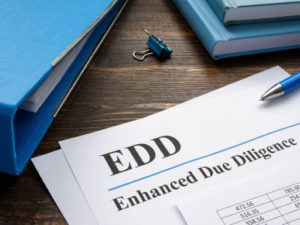In the world of B2B marketing, demand generation plays a crucial role in driving growth and ensuring the success of businesses. It encompasses a range of strategies and tactics aimed at creating awareness, generating interest, and ultimately acquiring customers. This article will explore the key concepts, objectives, and strategies behind effective demand generation in b2b marketing agency and how it can fuel growth for businesses.
Identifying and Targeting Ideal Customer Profiles (ICPs) for Effective Demand Generation
One of the fundamental steps in demand generation is identifying and targeting the ideal customer profiles (ICPs). By understanding your target audience and creating detailed buyer personas, you can tailor your marketing efforts to reach the right people at the right time. This involves conducting market research, analyzing customer data, and segmenting your audience based on key demographics, behaviors, and pain points.
By honing in on your ICPs, you can deliver highly relevant and personalized messages that resonate with your prospects.
Creating Compelling B2B Marketing Content: Generating Interest and Engagement
Content marketing lies at the heart of demand-generation strategies. Creating valuable and engaging content can attract, educate, and nurture your target audience. This can take various forms, including blog articles, whitepapers, e-books, videos, webinars, and case studies.
The key is to provide content that addresses your prospects’ pain points and challenges showcases your expertise, and offers practical solutions. You can establish thought leadership, build trust, and generate interest in your products or services through compelling content.
Implementing Multi-Channel Marketing Campaigns for Demand Generation
To maximize the reach and impact of your demand generation efforts, it is crucial to implement multi-channel marketing campaigns. This involves leveraging online and offline channels to engage with your target audience.
From email marketing and social media advertising to funnel optimization and event marketing, a multi-channel approach ensures your message reaches your prospects through various touchpoints. By diversifying your marketing channels, you can capture the attention of a wider audience and increase the chances of conversion.
Leveraging Marketing Automation: Streamlining and Scaling Demand Generation Efforts
Marketing automation plays a vital role in streamlining and scaling demand generation efforts. With automation tools, you can automate repetitive tasks, nurture leads, and personalize customer experiences at scale. From lead scoring and segmentation to automated email workflows and personalized content recommendations, inbound marketing automation allows you to deliver the right message to the right person at the right time. Automating time-consuming processes allows you to free up resources and focus on strategic initiatives that drive growth.
Account-Based Marketing (ABM) for Demand Generation: Targeting High-Value Accounts
Account-Based Marketing (ABM) has gained significant traction in B2B marketing for its effectiveness in targeting high-value accounts. ABM involves identifying a select group of high-potential accounts and tailoring personalized marketing campaigns specifically for them.
By aligning sales and marketing efforts, ABM allows highly targeted messaging, customized content, and personalized experiences. This approach ensures that your demand generation efforts are focused on the accounts with the highest potential for conversion, resulting in more efficient customer acquisition and higher ROI.
Utilizing Influencer Marketing in B2B Demand Generation Strategies
Influencer marketing is not limited to B2C industries; it can also be a powerful B2B Lead generation strategy. By partnering with industry influencers and thought leaders, you can leverage their credibility and reach to amplify your brand’s message.
Influencers can create content, participate in webinars or events, and share their experiences with your products or services. Their endorsement can significantly enhance your brand’s visibility, credibility, and trustworthiness, ultimately driving demand and fueling growth.
Maximizing Conversion Rates: Optimizing Landing Pages and CTAs
Optimizing landing pages and calls-to-action (CTAs) is crucial for maximizing conversion rates in demand-generation campaigns. A well-designed landing page with a clear value proposition, compelling visuals, and a prominent CTA can significantly impact the success of your campaigns.
A/B testing different elements, such as headlines, colors, and form fields, can help you identify the most effective combinations. Similarly, strategically placing CTAs throughout your website and content can guide prospects through the buyer’s journey and increase the chances of conversion.
Building Effective Lead Nurturing Programs for Demand Generation
Lead nurturing is a critical aspect of demand generation that involves building relationships with prospects over time. You can nurture leads and guide them toward purchasing by delivering targeted and personalized content at each stage of the buyer’s journey.
Lead nurturing programs can include automated email workflows, personalized recommendations, and targeted offers based on the prospect’s behaviors and interests. You can accelerate the conversion optimization process and drive growth by staying top-of-mind and providing value throughout the customer’s journey.
Leveraging Social Media for B2B Demand Generation: Engaging and Amplifying Reach
Social media platforms offer B2B demand generation opportunities by allowing businesses to engage with their target audience and amplify their reach. By creating a strong social media presence, sharing valuable content, and actively participating in relevant industry conversations, you can establish your brand as an industry leader and attract potential customers.
Social media advertising, such as sponsored posts and targeted campaigns, can also effectively reach a wider audience and drive demand.
Measuring and Analyzing Demand Generation Performance: KPIs and Metrics
To ensure the effectiveness of your demand generation strategies, measuring and analyzing their performance is essential. Key performance indicators (KPIs) and metrics, such as conversion rates, cost per lead, customer acquisition cost, and return on investment (ROI), can provide insights into the success of your campaigns.
By tracking and analyzing these metrics, you can identify areas for improvement, optimize your strategies, and allocate resources effectively.
Refining B2B Sales and Marketing Alignment for Efficient Demand Generation
For demand generation strategies to be truly effective, aligning sales and marketing efforts is crucial. Close collaboration between the two departments ensures that marketing campaigns align with sales objectives and leads are effectively handed over to the sales team.
Regular communication, shared goals, and feedback loops can facilitate a seamless transition from marketing-generated leads to closed deals, resulting in more efficient demand generation and accelerated business growth.
Personalization and Customization in B2B Demand Generation Strategies
Personalization and customization have become crucial elements in B2B demand generation strategies. In today’s competitive market, where customers are inundated with information and options, personalizing your approach can significantly impact your success.
By tailoring your messaging, content, and experiences to your target audience’s specific needs and preferences, you can create a more meaningful and engaging customer journey.
Let’s explore how personalization and customization can fuel growth in B2B demand Growth strategies.
- Gain a deep understanding of your target audience through market research and buyer persona development.
- Use dynamic website content to tailor the user experience based on visitor demographics and behavior.
- Segment your email list and craft personalized email campaigns that address individual needs and interests.
- Provide customized product or service recommendations based on browsing behavior and preferences.
- Utilize targeted advertising to reach specific industries, job titles, or companies.
- Implement Account-Based Marketing (ABM) strategies to personalize outbound marketing efforts for high-value accounts.
- Create personalized landing pages that match the visitor’s interests and expectations.
- Engage with your audience on social media by responding to comments and sharing relevant content.
- Host personalized events and webinars that cater to your target audience’s specific interests and needs.
- Base your decisions on data to measure and analyze the effectiveness of your personalization efforts.





Be First to Comment